There’s something euphoric about closing a huge deal and getting that sweet, sweet commission check.
That feeling of euphoria is what high-ticket salespeople strive for. They work hard to bring a deal across the finish line. And when they do, they get paid handsomely.
Sound interesting?
If so, we’re about to demystify this industry for you.
Whether you are currently in a sales position or have zero sales experience and are looking for ways to increase your income, high ticket sales can be an incredible place to start (even if you don’t have sales experience).
In fact, this industry is growing so rapidly that companies are finding it hard to staff their sales teams with enough good salespeople to keep up with demand.
This industry is a game of catching a few big fish, every so often, while also having dozens of other lines in the water at any given time.
The most important thing to understand about high ticket sales is this:
It’s NOT a “get rich quick” scheme. It requires practice, training, persistence, and honing in on the art of persuasion.
(Note: Persuasion is not to be confused with manipulation. Listening, empathizing, and leading a prospect to a product that will alleviate their stress and financial concerns is not manipulation.)
The point of selling a high ticket product is to help your prospect find a solution to their problem. Sounds simple, right? But the problem goes deeper than their surface issues. You’re also trying to understand the motivations behind their surface issues.
Your job is to find those deeper motivations.
In this blog post, we’ll show you how to do that, so you can be successful with high ticket sales.
What Are High Ticket Sales?
High ticket sales are simply products or services that cost $3,000 to $10,000+. These products or services are considered high-end and high-value.
Prospects interested in this price point have typically done their research, know all about your product or service, and are already warm leads.
But, that doesn’t mean they are ready to pull the trigger. Unlike low-ticket sales, closing the deal on a high ticket item requires some level of one-on-one conversation.
That’s where a high ticket sales ‘closer’ comes into play. Doing a deep dive with a prospect and really understanding their pain points, goals, and objectives helps you not only determine if the product or service you are selling will solve those problems, but also how to overcome any objections they may have to the high ticket price point.
A low ticket item of $997 or less doesn’t necessarily require a closer to walk a customer through the pros and cons. But a price point of \$5,000+ investment does demand some one-on-one attention, assurance, and guidance to close the sale.
New Training, The 4 Steps To Get Started With This Side Hustle In As Little As 30 Days
What Types of Items Are Considered High Ticket?
When we say “high ticket”, we’re talking about stuff that costs a lot.
This can range from $3,000 to $20,000, and sometimes even up to $100,000 or more. But it’s not just about physical items like expensive cars or jewelry.
These days, a lot of high ticket sales happen in the service industry, with things like agencies and coaching programs.
High-Ticket Agency Services
In the agency world, things like marketing, advertising, or business consulting can be high ticket.
These services are for companies that want to spend a lot of money to grow their business. They might pay anywhere from $20,000 to over $100,000 for these services.
What they’re buying isn’t just the agency’s time, but their ability to deliver big results that make the investment worth it.
High-Ticket Coaching Programs
Coaching programs are another area where you see a lot of high ticket sales.
These programs can cover all sorts of topics, like personal growth, business skills, or health and wellness. Prices can range from $3,000 to $20,000 and sometimes even more.
Just like with agencies, the clients here are paying for more than just the coach’s time.
Customers are paying for big changes in their lives or businesses that come from using the coach’s strategies and methods. And for them, that’s worth the high price tag.
Stages of the High Ticket Sales Funnel
Stage 1: Awareness
In the first stage, the potential customer becomes aware of your product or service.
It’s not about pushing your offer but about showing them that you understand their problem or desire.
You aren’t selling the product itself but rather the solution it provides.
For instance, if your customer is struggling with hormonal weight gain and is searching for a weight loss solution, your initial job is to connect with their specific struggle and need.
Stage 2: Interest
Now the customer is curious and wants to learn more about how you can help them.
This is where testimonials, case studies, or scientific evidence come in.
You’re showing them your method—your unique approach to solving their problem—and how it has worked for others.
So, using the weight loss example, you could present success stories of past clients, explain the science of hormone imbalances and weight gain, and outline your specific approach to addressing this issue.
This builds confidence in your method and sparks the customer’s interest.
Stage 3: Decision
By this stage, your customer is seriously considering your offer. They believe you understand their problem, and they’re interested in your approach.
However, they’re still not sure if they should buy.
Now, your task is to present clear and compelling reasons why your high-ticket offer is the best choice for them.
This could involve one-on-one discussions to answer their questions, clarify their concerns, or even demonstrating more evidence to reinforce your solution’s effectiveness.
Stage 4: Action
Finally, the customer makes the decision to buy. You’ve successfully shown them that your high-ticket offer is the solution to their problem, and they’re ready to invest.
However, ensure the buying process is smooth and straightforward for them. After purchase, check in to confirm they’re satisfied, as this could lead to referrals and repeat business.
In every stage, your goal is to guide the customer closer to recognizing your high-ticket offer as the best solution for them.
It’s about showcasing your unique approach to resolving their specific problem or need, and providing convincing evidence to support this.
How to Sell High Ticket Items: A Proven 2-Part Playbook
Part 1: The Six Limiting Beliefs
When selling a high ticket offer, it is important to understand the limiting beliefs that keep people from buying.
There are six limiting beliefs that we will walk through below.
If you don’t understand or address these issues, your prospect won’t be willing to listen to your pitch at all.
1. Pain Point
Understanding a prospect’s pain point is crucial intel as you deep dive into a sales call. If you don’t understand their frustrations, you won’t be able to give them a good enough solution to their problem, which could cost you the sale.
Unresolved desire is another type of pain point.
How can you see this?
Look for a desired result that your prospect can’t have—and think about how that makes them feel.
Fully grasping the frustrations and desired results a prospect is looking for helps you to know exactly how to provide solutions through the product or service you are selling.
2. Doubt
Eliminating doubt is crucial, but first, you have to understand where it’s coming from.
Are they doubtful that your product is the best? Are they wondering if they could take your methodology and do it all by themselves?
You’ll need to help your client overcome these things.
3. Cost
Cost is often the excuse, but rarely the main reason.
That’s why it’s imperative to dig deeper.
Typically, on a high ticket sales call, the prospect is already aware that the product and/or service you are representing has a higher price point. They are also usually aware of the perceived value that comes along with that price point.
If they are on the call, they can likely come up with the resources. But are they willing to pay that high price tag and fix their pain point?
It can actually be quite simple to overcome this particularly limited belief. Many times, all you have to do is help your prospect see that the future cost of pain would be greater than the pain of investing financially now.
Walk them through the amount of time, energy, and resources needed in order to do it themselves. Help them see it’s a much larger investment than paying now for a solution that can start working immediately.
Going in with the angle discussed above in “cost”, helps prospects come out of the weeds and see everything from a bird’s eye view.
Do they want to keep spinning their wheels trying to fix an issue that is still unresolved? Or, are they ready to try something new with a proven track record?
That’s how to tell high ticket items.
4. Desire
Leading your client to the desired result they told you they were looking for is a key element in overcoming limiting beliefs.
Guiding them into the vision of what it will look like once they find the solution to their problem and see the desired results is very compelling.
5. Support
If the prospect has the backing of his or her friends, family, and co-workers, it can make a world of difference in their decision to purchase a high ticket item.
Although having this is important, it’s not a determining factor for success. Many can say yes to an offer with little to no support. But it tips the scales in your favor.
6. Trust
Leading and providing support through a ‘consultant’ approach builds trust—and is essentially what you are supposed to be doing as a salesperson.
Your priority is finding solutions for the prospect’s pain points. The prospect needs to be able to trust in the methodology, your product or service, your company, and you as an individual.
Part 2: The Pitching Framework
The pitching framework is broken down into three parts:
1. High-Level Promise
In this part of your pitch, you are simply stating what your product or service is and what it is not.
2. The Bridge
The Bridge is broken down into three or four milestones. The first milestone is essentially the prospect’s current situation, unresolved pain point, and all!
The last milestone is where the prospect ultimately wants to be (and where your product can get them).
These milestones in the bridge section are essentially the plan to move forward, eliminating the issues and growing into the desired result the prospect has already conveyed to you.
3. The Delivery
The end result is what the prospect did to get to this point.
The bridge is the most substantial part of this framework.
Walking through the current situation, steps to resolve the situation and looking back on the plan to see what occurred to get the prospect to this desired place is such an important element of this framework – because you are creating the plan out for them.
The first two milestones will require them to explain why they have failed in the past and why they think this solution is going to bring about their desired results.
Milestone three (and four) provide a future pacing plan once the first two milestones are resolved.
Having the prospect be a part of this process by using direct commands is crucial for getting them to hone in on the call and be present.
Asking a direct question can also provide you with more understanding of what they are thinking and if they are even in a place to buy a high ticket offer at the moment.
Basically, this framework lets you tell your prospect that other people with similar unfulfilled desires are making ‘xyz’ mistakes.
Because of those mistakes, they are experiencing consequences. These mistakes and consequences can be avoided through your processes and methodology.
3 Real-World Models for Insane High-Ticket Sales
Example #1 – Real Estate
Let’s talk about how real estate sales work.
A real estate company is smart about how they sell houses. They know that people want more than just a house; they want a home.
So, they always focus on giving great personal service, showing off exclusive houses, and helping people see themselves living in a place long-term. They want their brand to feel sophisticated and excellent.
Here’s how a usual real estate sales funnel goes:
Step 1: The First Impression
When someone is interested in buying real estate, their main goal is to find someone they can trust. So they do one of the following things:
- They ask their friends for a referral.
- They call around and ask to talk to someone.
- They look at the websites of popular real estate agents or companies.
Often, many of these paths lead to the website.
Eventually this ends up with a real estate agent getting you set up with a list of new houses to peruse.
Step 2: Options
You look at different types of homes—big mansions, cool city apartments, or houses in special locations—depending on the type of real estate company.
Each house usually has a description and nice pictures. This helps you choose the kind of house you’re dreaming about. The website makes it easy to explore and find what you like.
You’ll typically see upsells and downsells. If you don’t have the budget for their highest tier houses, they’ll give you a lower offer.
Step 3: Interest
If you really like a house, you can ask for more information from the agent you’re working with. They’ll help you decide whether it’s worth learning more about.
Step 4: The Appointment/Tour
Once you’ve decided on the property, they will most likely set an appointment to give you a tour.
Your agent will accompany you throughout the tour to help you make a decision.
This is also where their main pitch usually happens.
Step 5: The Purchase
After the tours, and you decide to buy the property, it’s most likely paperwork. This means that they’ve closed the deal and earned a profit. Plain and simple.
This way of selling real estate shows how companies make it easy and personal for people to find and buy their dream homes.
And as a result, they also gain from the sales.
Example #2 – Tony Robbins
Here’s another example—Tony Robbins.
According to his website, Tony Robbins is an entrepreneur, #1 NY Times bestselling author, philanthropist, and the nation’s #1 life & business strategist.
He has empowered more than 50 million people from 100 countries around the world through his audio programs, educational videos, and live seminars.
Mr. Robbins is the author of six international bestsellers, including the 2014 New York Times #1 financial bestseller, MONEY: Master the Game and UNSHAKEABLE: Your Financial Freedom Playbook (2017).
His most recent book, LIFE FORCE: How New Breakthroughs in Precision Medicine Can Transform the Quality of Your Life and Those You Love, was released in February 2022.
And here we’ll look at his sales funnel:
Step 1: The Website

Potential customers are led to the Tony Robbins landing page. From there, they can immediately see a call to action for Tony and Sage Robbin’s project.
Keep in mind that this is from the holiday season of 2023 (December 2023 to January 2024), so the message is very specific, but this could change.
Notice how the “Celebrate With Us” button is highlighted. This is a subtle design touch that good website builders and companies employ to lead customers to make a decision.
Step 2: The Options
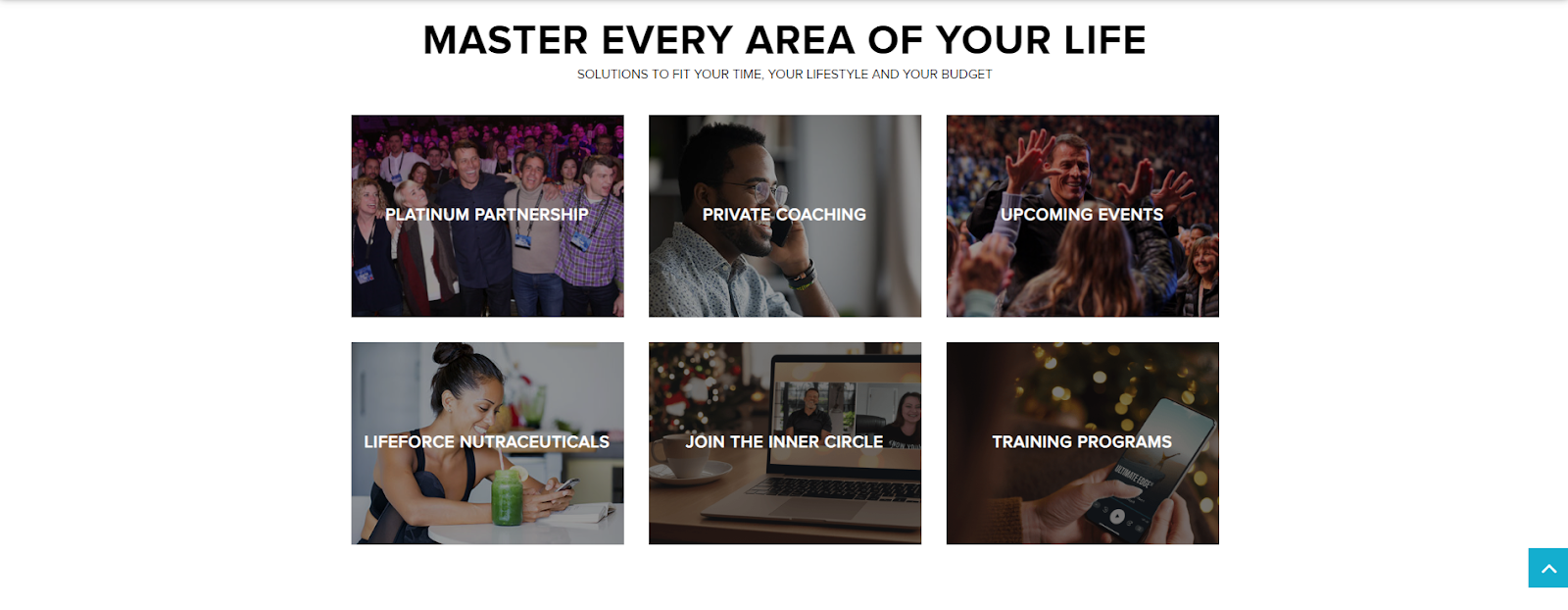
Here, people can choose from the services they want to acquire, further leading the customers deeper to the sales funnel.
However, they also have free options if you don’t want to avail the premium.

This is what we call the “low-ticket products.” Low ticket products are a great way to give your potential customers a sneak peek to what you can do—making it helpful and easier for them to buy your offer.
Here, you’ll see that Tony Robbins have three options: a blog, podcast, and a video.
Step 3: The Service
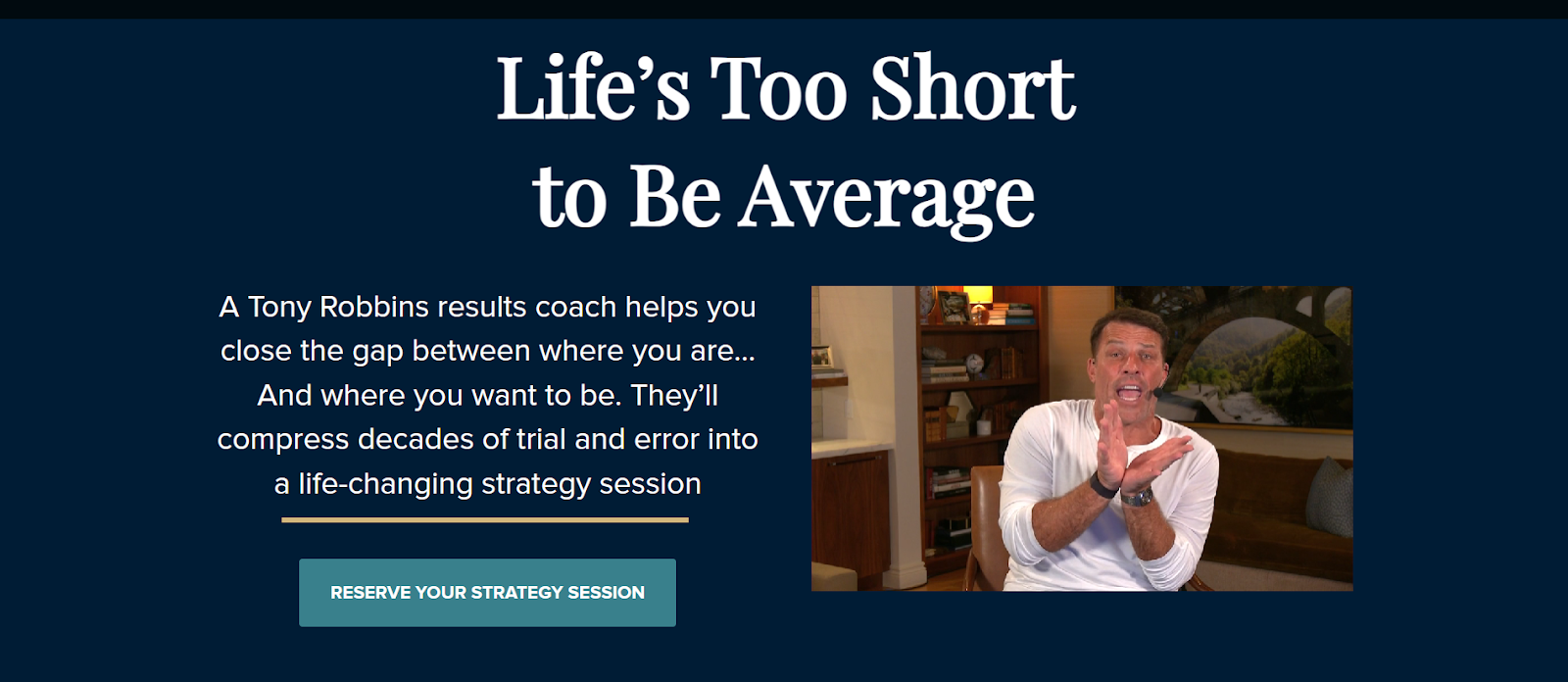
Let’s say that you click the “Private Coaching” service, this is what the page looks like.
Immediately, you’ll see a compelling message and what you’ll get with the service. It even comes with a video to further help you and solidify their service.
You can also see a call to action highlighted for the potential customers. You’ll see this call to action throughout the page—this is a great strategy to further lead their potential customers deeper in the sales funnel.
You’ll also see testimonials and what they promise to give you with this service in this page.
Again, Tony Robbins makes it easier for his potential customers to get the service by providing proofs.
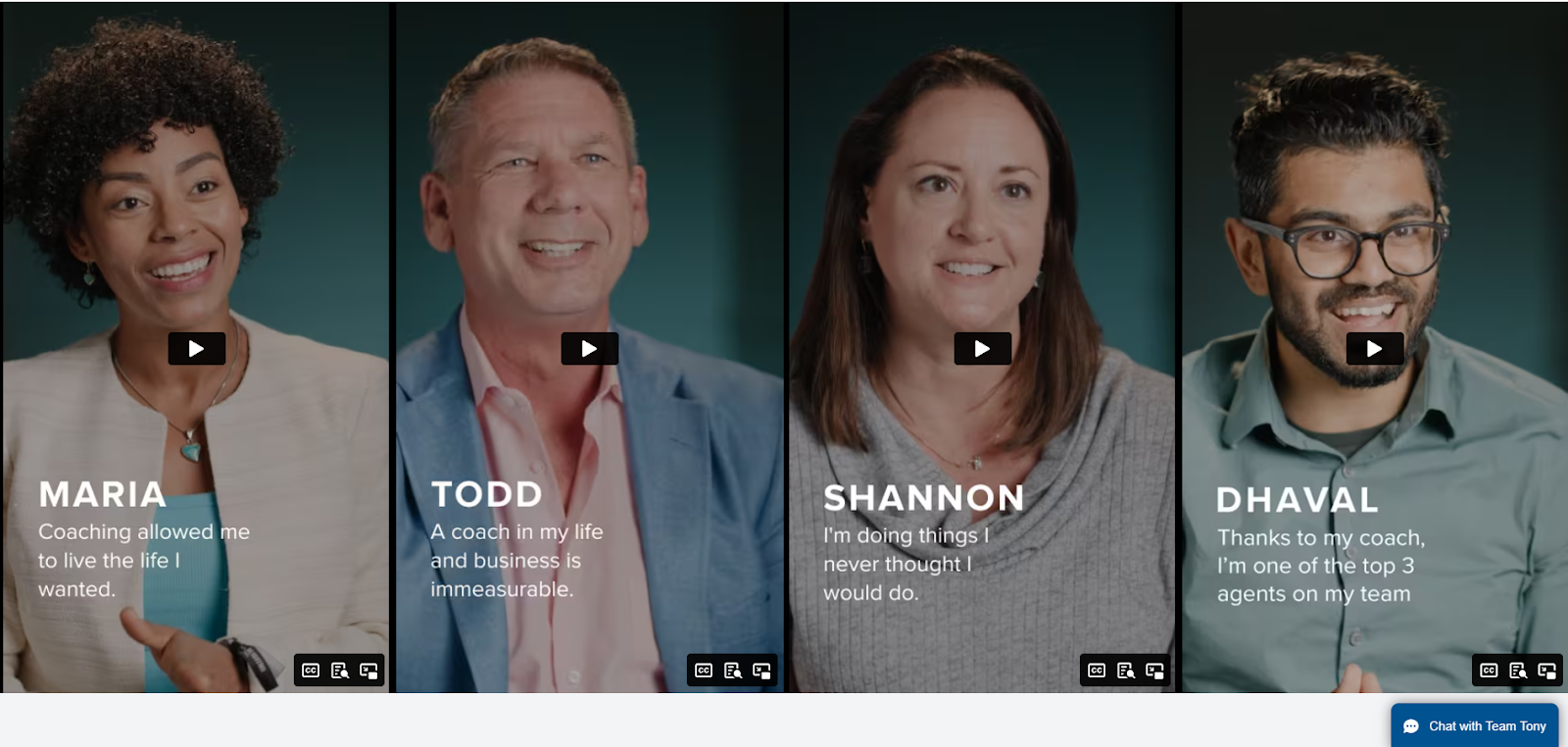
Step 4: Reservation
Once you click the “Reserve Your Strategy,” You can fill up your information to reserve your position.
Notice how they only do reservation? This is a tactic that creates a sense of urgency for the potential customers. It’ll make them want to sign up more because there are only limited spots—making the service appear more premium.
Example #3 – Salesforce
Salesforce is a SaaS (Software as a Service) CRM solution for fast-growing companies.
Salesforce prices start at an average of $1,800 per month, sometimes reaching up to $15,000 per month or more, depending on the industry, type of product, and business.
Let’s take a look at their funnel:
Step 1: The Website
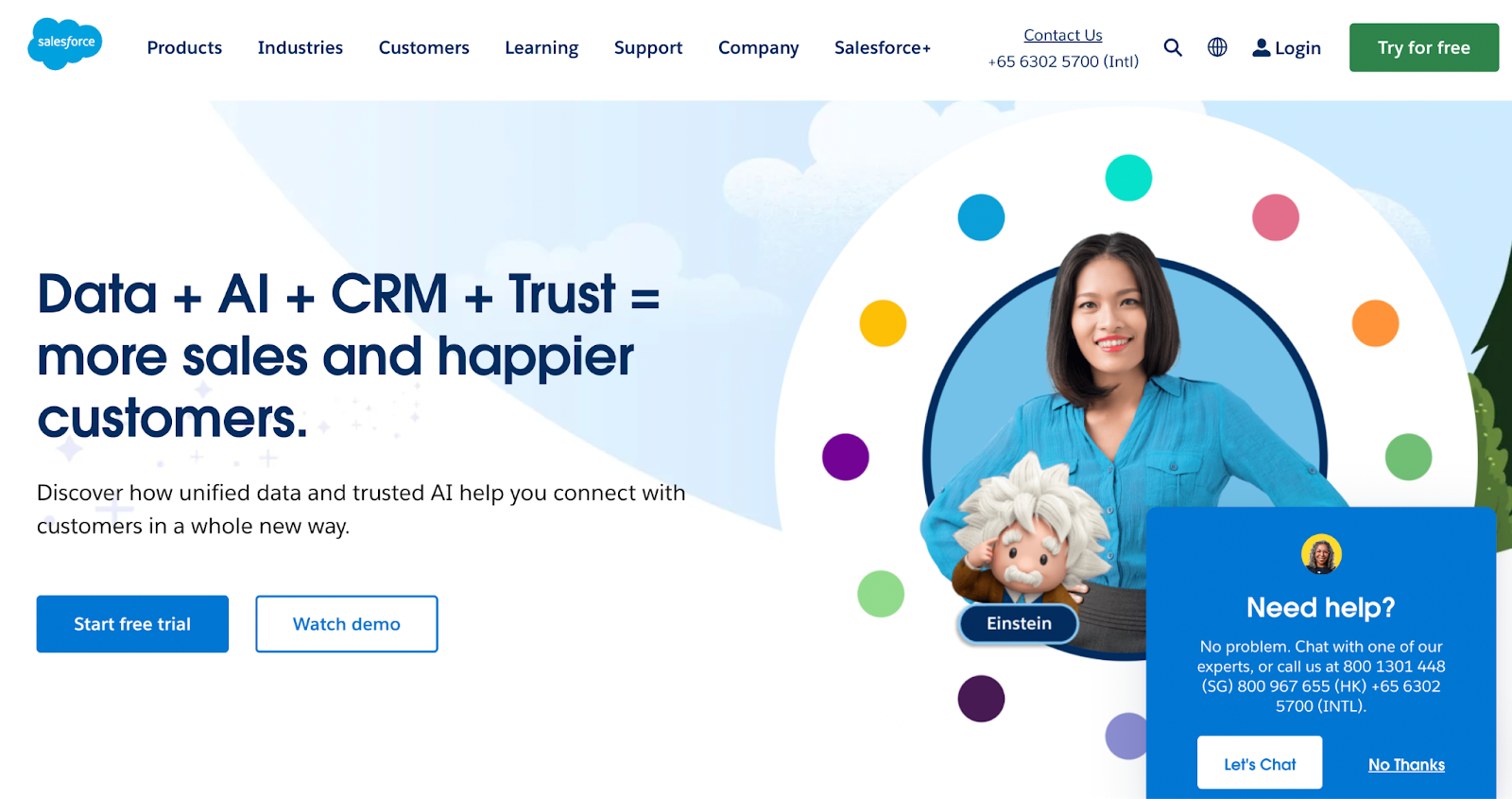
Granted, those looking to buy Salesforce may already be familiar with what the company offers. But those who are unaware will find their website slightly overwhelming initially. Luckily, they provide a friendly, light interface that’s easy to navigate.
Step 2: The Options
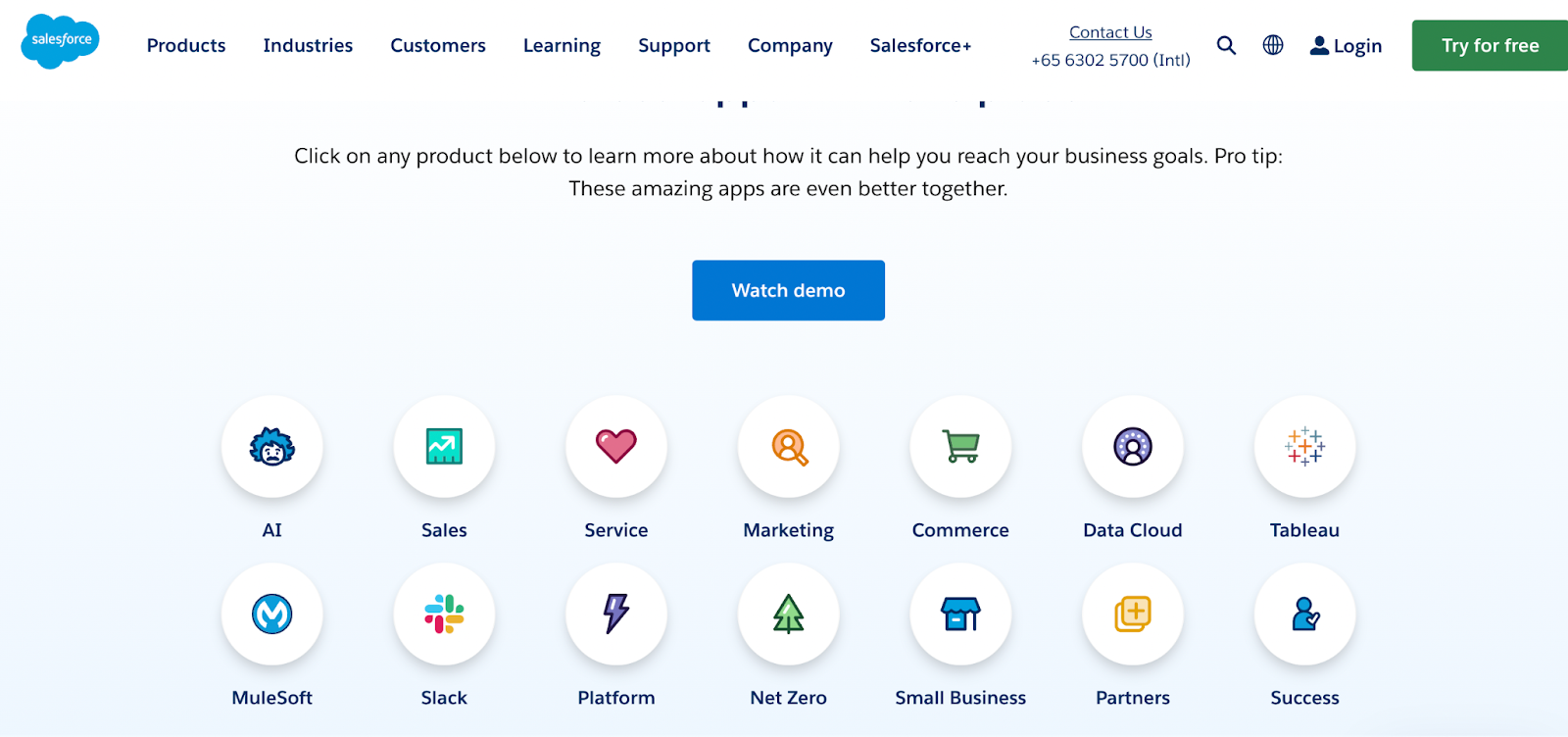
The good news with Salesforce is they seem to have a CRM solution for almost any type of business, big or small. Not only do they have a good product range, but they also give customers about 15 or so plan options to choose from.
It might seem detrimental to offer so many options, but their products cater to such a wide audience that it’s only appropriate to have a good amount of choices available.
Step 3: The Purchase
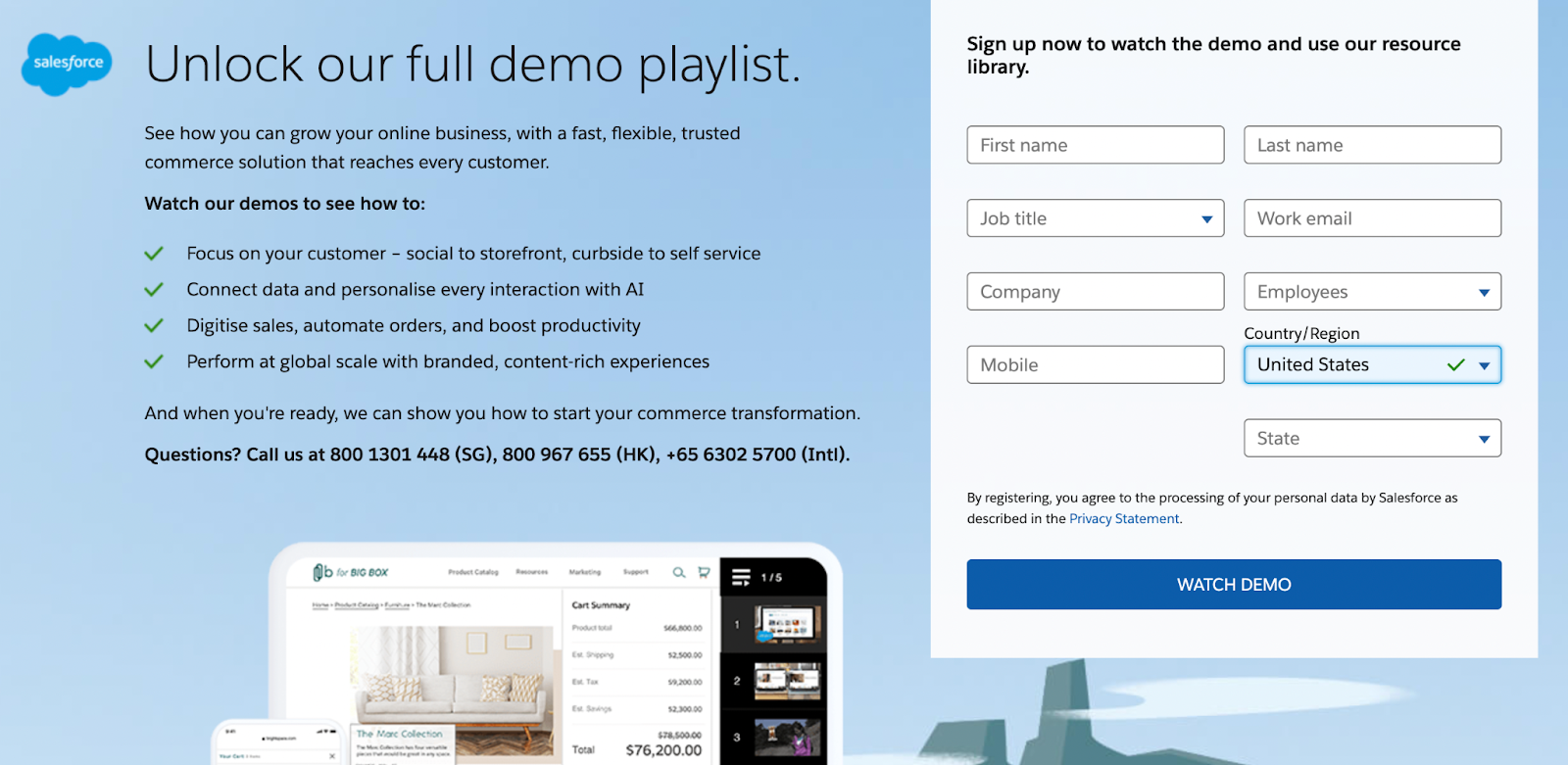
Once you’re ready to buy or avail of the free trial, the only way to do so is to watch a demo and contact them. As a high-ticket item, it boils down to guidance and personalization once again.
How to Get Better at High Ticket Sales
If you are brand new to sales and looking for a career change, don’t let the name “high ticket sales” intimidate you!
High ticket sales can be done well if you are trained and believe in the product or service you are selling.
Our training program can help you cut years off your learning curve.
It’s an investment, but with that investment, you will be able to achieve a new career path and have the power to make a better income—from anywhere in the world.
Plus, through our training program, we set you up for success immediately, rather than having you learn by trial and error on your own!
We give you the exact scripts that so many remote closers have found success using.
You can click here to find out more about getting started with your training.
New Training, The 4 Steps To Get Started With This Side Hustle In As Little As 30 Days

Aaron Martinez is a remote closing expert, content creator, and the face of The Remote Closing Academy. Since 2013, he’s started and grown YouTube channels to hundreds of thousands of subscribers, ran a digital marketing agency, and had a ton of success as a remote closer. Now, his focus is teaching you how to master sales so you can increase your earning potential and do more fulfilling work.



